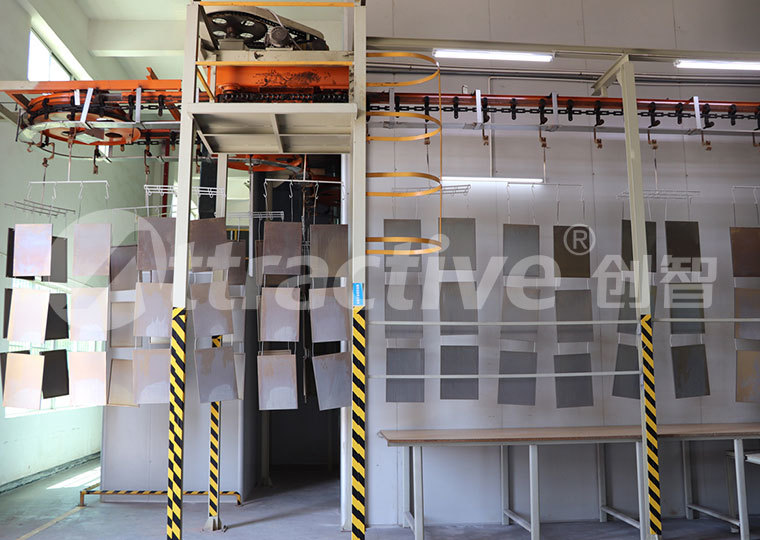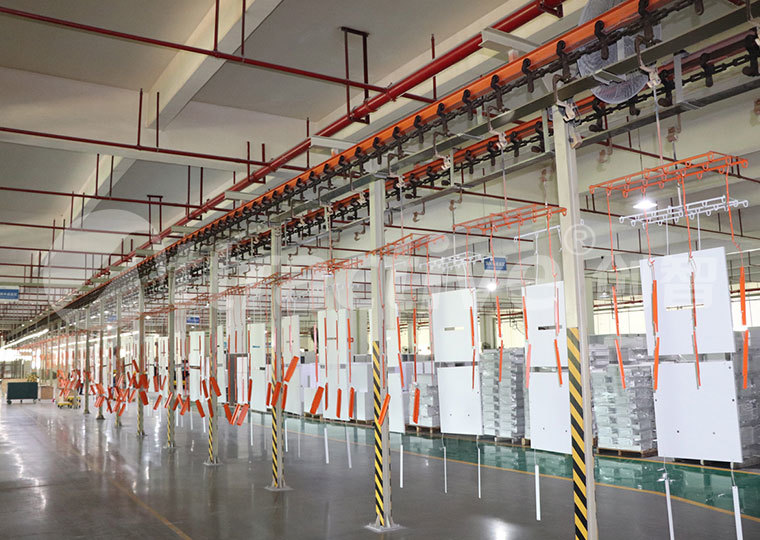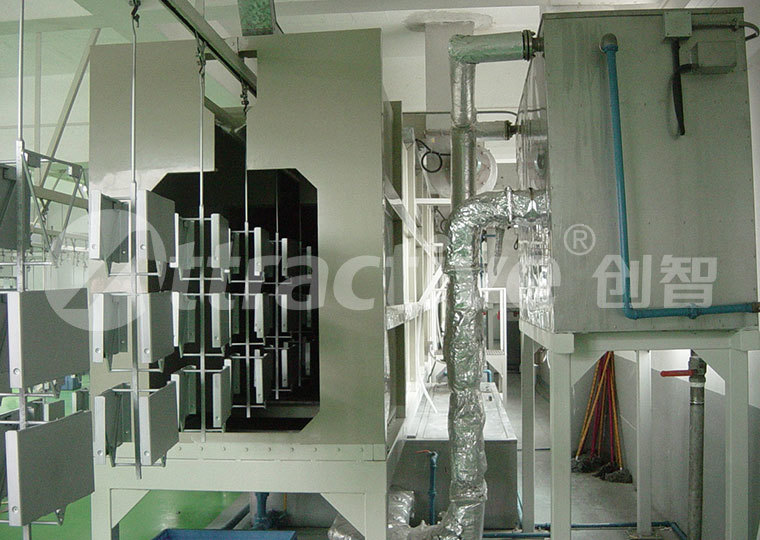30 Years Experience Coating Line Turnkey System Integrator
Tel: +86 13580616025
28
2019
-
09
Factors affecting metal surface pretreatment
Author:
Chuangzhi Coating
1.Surface treatment solution properties
Commonly used phosphating treatment, the following points of attention in use: solution system, solution composition and concentration, acidity (TA, FA), temperature, solution maintenance, "three wastes" emissions.
2. Metal material
Factors that affect the quality of phosphating are generally considered: pre-treatment prior to phosphating (grease, rust, roughness); phosphating film properties (composition, thickness, porosity); post-treatment. In fact, the metal material is different, and the phosphating surface treatment solution is different. The phosphating of steel workpieces is taken as an example. In recent years, it has been found that the surface state of metal matrix materials has a great influence on the quality of phosphating.

(1.) Surface carbon contamination
The form of carbon in steel: carbide (Fe3C...), flake graphite, spheroidal graphite. Steel plates with a large surface carbon concentration have poor corrosion resistance; in areas with high carbon concentrations, zinc phosphate crystals cannot be precipitated, causing defects in the phosphate film, and early foaming and spalling in the salt spray test. This should be noted when selecting materials.
High carbon steel is powerful for blackening treatment, and manganese phosphating solution is generally used for phosphating at medium and high temperatures. When the steel is black (blue), the higher the carbon content of the carbon steel, the easier it is to blacken. After the steel parts are pickled, carbon remains on the surface, and this layer of carbon (inclusion in the phosphating film) can increase the blackness of the coating.
(2.) Steel surface oxide film
The thickness of the oxide film on the steel surface directly affects the phosphating speed and the phosphating effect. For example, after pickling, the exposed substrate has high surface atomic activity and is easily oxidized to form an oxide film. When the oxide film is thin, the naked eye does not change, and it is impossible to judge!
The relationship between the oxide film and the corrosion resistance was analyzed by polarized light, and it was found that when the thickness of the oxide film was less than 0.016 nm (oxygen atom radius: 0.074 nm), it was preferable. If the oxide film is too thick, the corrosion resistance is poor, and when a blue (green) oxide film appears, it is often not phosphatized. After pickling and washing, the time control before phosphating is crucial!

(3.) Crystal orientation of the steel sheet surface
The nature of metallic materials depends not only on composition and content, but also on microstructure. Heat treatment will change the microstructure of the steel plate, and the reactivity of different crystal faces will be different, that is, the crystal face will affect the phosphating performance. This is caused by the simultaneous treatment of cold-rolled and hot-rolled sheets.
The experiment found that the "111" surface has high reactivity, and it has greater solubility than other crystal orientations in the presence of oxidant, which is beneficial to the first step of phosphating reaction - acid etching, which is undoubtedly beneficial to the whole phosphating process. Similarly, when platinum is used as a hydrogen oxidation or oxygen reduction catalyst, the 111-side catalytic effect is the best! alloy element.
Most of the commonly used cold-rolled steels are alloy steels. Under different rolling conditions, the alloying elements will be concentrated on the surface, and the surface will exhibit a cathode anode region, resulting in uneven phosphating film. The surface concentration of manganese and phosphorus occurs under different heat treatment conditions.
When the manganese concentration is high, the phosphating reaction is good; the concentration of phosphorus delays the formation and growth of the crystal nucleus, concentrates the oxide of phosphorus, prevents the iron from being dissolved, and reduces the phosphating property. Alloying elements such as tin, aluminum, titanium, chromium, and lead cause coarse phosphating crystals, resulting in a decrease in corrosion resistance of the phosphating film.

(4.) Phosphating of galvanized sheet
Whether the galvanized sheet is passivated has a great influence on the phosphating effect. The passivated galvanized sheet has poor phosphating properties, and the resulting crystal is coarse and disordered. Compared with electrogalvanized sheets, hot dip galvanizing has poor phosphating properties, and the latter has good phosphating performance, and the phosphating of various alloys is also very different.
In summary: the performance of the phosphating film is related to the surface state of the matrix material, especially the matrix material. Before proceeding with phosphorus treatment, you should first understand the material and surface state you are working on in order to select the appropriate process and formulation.
3. Effect of heating temperature and time on phosphating film
Zinc phosphating is taken as an example for illustration. Everyone is concerned about the high heating temperature, which affects the appearance quality of the layer, such as yellowing. Phosphating film is a poorly soluble phosphate containing fixed crystal water. If the heating temperature is too high or the time is too long, the phosphating film will be dehydrated, and the phosphating film will be cracked, powdered and peeled off, especially at high temperature heat treatment. Fluororesin coating, polyphenylene sulfide coating, thick coating of powder coating.
The above is the relevant content of [factors affecting the surface pretreatment of metal]. Next, I will introduce the information about the "temperature requirements of various coatings in the spraying production line". Welcome to contact us for updated information! Watch more videos
Factors affecting metal surface pretreatment
Next Page
Related News
undefined































